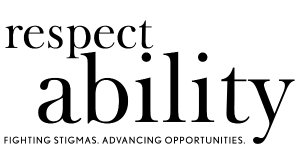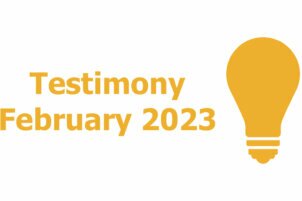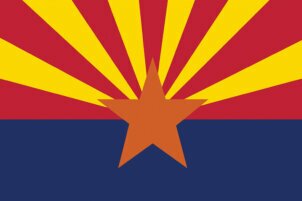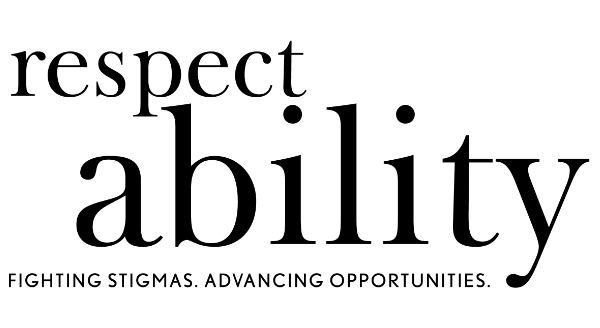Juneau, AK, May 25 – This week, the Alaska Workforce Development Board will meet to discuss the status of workforce practices in the state. In response to this meeting, RespectAbility, a national, nonpartisan nonprofit organization, submitted testimony on how to implement best practices, advocate for greater inclusion and improve the standing of people with disabilities in the workforce.
“When it was passed with broad, bipartisan support in 2014, the Workforce Innovation and Opportunity Act (WIOA) invested unprecedented resources into efforts to get people with barriers to employment into the labor force,” said Ollie Cantos, RespectAbility’s Chairman. “Now, after the pandemic that has reshaped our economy, it is time to devote significant attention to supporting the economic advancement of students, job-seekers, and entrepreneurs with disabilities.”
There are more than 40,730 working age (18-64) Alaskans living with some form of disability. Before the pandemic, only 39.1 percent of the working age population of people with disabilities were employed. It is critical that Alaska’s Workforce Development Board listens to the individuals with disabilities and advocates impacted by these unemployment rates. In order to make the workforce more inclusive, and to find practical ways to make the workforce more accessible for the entire population, RespectAbility collects, summarizes, and publicizes ideas on key workforce solutions. To learn more about RespectAbility’s advocacy work, please visit our Policy website.
RespectAbility’s full testimony is presented online and below:
To: Members and Staff, Alaska Workforce Development Board
From: Staff, Board, and Apprentices of RespectAbility
Re: Public Comments for May 26, 2022
Dear Gov. Mike Dunleavy and Chairperson Kevin Meyer,
Thank you very much for the opportunity to offer our comments for the Alaska Workforce Development Board’s May 26, 2022, meeting. RespectAbility is a nonpartisan, nonprofit disability inclusion organization dedicated to fighting stigmas and advancing opportunities for millions of Americans with disabilities.
One-in-five Americans have a disability according to the U.S. Census Bureau. People with disabilities are America’s largest minority group and the only one that, due to accident, aging, or illness, anyone can join at any time. Indeed, in Alaska itself, there are 86,763 residents living with some form of disability. In that number, it is critical to recognize the great diversity and intersectional identities of people with disabilities in Alaska. Out of that number, there are 31,732 Black, Indigenous, and People of Color (BIPOC) people with disabilities.
These facts have wide-ranging implications for the state’s overall workforce development planning, and the unique challenges facing Alaskans with disabilities need to be recognized across the entire scope of your board’s work.
In these comments, RespectAbility’s team of subject matter experts and advocates with disabilities have collected our critical ideas, policy proposals, and key data to inform your board’s decision-making process. While we are a national organization, we are eager to collaborate with you and your team.
Our ideas and recommendations are as follows:
Focus on Closing the Gap in Labor Force Participation Rates between Alaskans with and without disabilities
As Alaska and the nation grapples with strategies to get people back to work and to fill in labor shortages, it is worth recognizing the positive and negative realities facing workers with disabilities. People with disabilities want to work, can work, and are striving to work more than ever before.
As of Spring 2022, the labor force participation rate for working-age people with disabilities is now two full percentage points higher than it was before COVID-19. This means that people with disabilities are engaging with the labor force in higher numbers than before the pandemic. According to the Bureau of Labor Statistics, people with disabilities now have a 37.8 percent labor force participation rate, compared to 77.2 percent of those without disabilities. Accordingly, decision making entities like your workforce board need to adopt a focused strategy for getting more people with disabilities into the workforce and the right metrics to hold themselves accountable for that success.
Look at Strategies to Close the Gap in High School Graduation Rates
The link between educational attainment and ultimate employment success is clear. As such, gaps in educational attainment, especially around high school completion rates, have serious long-term impacts on the labor force, the talent pipeline, and the economic wellbeing of Alaska.
In Alaska, there are more than 7,699 students with disabilities. The gap in graduation rates between students with and without disabilities continues to undermine their futures.
Thousands of students with disabilities are leaving the Alaska school system with uncertain prospects for finding a place in the workforce. By far, those earning the least are students without a high school diploma. Thus, legislators have a moral imperative to invest in and expand services that will support the educational and employment success of more students with disabilities.
Expand on the Use of Online, Cohort-Based Apprenticeships for Workers in the Knowledge Economy and the Nonprofit Sector
The pandemic has made remote work an accepted reality for thousands of workers, normalizing a common reasonable accommodation request long championed by workers with disabilities. Microsoft has dramatically expanded their accessibility features, including built-in speech to text technology which makes it possible for people with even the most limited mobility to use computers. This has opened an unprecedented window for people with disabilities to contribute to the success of nonprofits, communities and beyond. Such approaches have major implications for efforts to train workers for good-paying jobs in the knowledge economy and the nonprofit sector.
Further, cohort-based models offer a cost-effective method for delivering workforce services, especially for transition aged youth with disabilities. Instead of the method of one-on-one client services typified by the usual service system, cohorts offer the chance to blend and braid funding into support training and build in a social component among cohort participants crucial to soft-skill development. As such, we recommend that professionals involved with the provisions of Pre-Employment Transition Services (Pre-ETS) examine proven models of cohort-based services and look to build on models such as:
- Project RISE in Virginia: Project RISE (Resilience, Independence, Self-Advocacy, Employment), is a cohort based, skill development focused training program for blind and low vision students ages 14-21. Over the course of a 10-month program, students are trained in independent living skills and in professional skills for use in future employment. Working with each student, educational and career goals are developed and supported through internship or volunteer placement. For more information about RISE, please visit their website.
- Project SEARCH and the Caring Economy: Project SEARCH is a school-to-work transition program for adults with intellectual and developmental disabilities that prepares them for good paying careers in the caring economy. By placing students with disabilities into three internships at a job site over the course of an academic year, student learn skills, build their confidence and gain competitive work experience. There are already SEARCH sites in several hotels and hospitals around the greater St. Paul metropolitan area. To learn more, please visit their website.
Look at Expanding Access to Entrepreneurship as a Workforce Solution
In the pre-pandemic era, job seekers with disabilities were already turning to self-employment in far higher numbers than their non-disabled peers. As of the 2019 American Community Survey, approximately 700,000 workers with disabilities were self-employed, enjoying the flexibility and opportunities that entrepreneurship provides. For many, they did so because being your own boss and owning a small business served as a solution to the barriers to employment that hold back far too many people with disabilities. Now is the appropriate time to begin digging deep into that work as an equitable workforce strategy. We further note that as Alaska expands this program, it should be done with careful consumer input, and use criteria to measure success and eligibility that is consistent with the real factors necessary to ensure the success of a small business.
Leveraging Federal Contractors and Section 503 to Drive Employment Opportunities for Workers with Disabilities
In looking at new strategies, alternative pathways, and economic sectors to support the aspirations of jobseekers with disabilities, it is worth recognizing the unique place occupied by companies doing business with the federal government. Section 503 of the Rehabilitation Act of 1973 specifically contains legislative language about non-discrimination against individuals with disabilities, and subsequent regulations have been used to encourage contractors to hire individuals with disabilities through affirmative action. Beginning in 2016, the Office of Federal Contracting Compliance Program (OFCCP) set a new utilization goal for contractors to have up to 7 percent of their workforce, in all job categories, be individuals with disabilities. The 7 percent goal was very much intended as a gauging goal and a tool to encourage great diversity efforts.
In seeking to meet the challenge of Section 503 and the 7 percent goal, contractors have adopted a wide range of strategies including encouraging disability self-disclosure among employees and staff. Contractors are prohibited from asking the nature of a disability; however staff may self-disclose through demographic documents and data collection. There is comprehensive information available to support contractors through great national organizations like the National Organization on Disability (NOD) and Disability: IN.
There are major, multi-billion-dollar contractors doing business with the federal government across Alaska. Examples of major federal contractors include:
- Petro Star Inc. $107.03 million (1.2% of total contracts)
- Aecom Technical Services, Inc. $91.42 million (1% of total contracts)
- Neeser Construction, Inc. $88.04 million (1% of total contracts)
These companies, and other contractors in other parts of the state, are natural partners in this work. For more detailed information, please visit our website.
As an organization that advocates on behalf of job seekers with disabilities and their families, we believe that collecting the best ideas, emerging practices and innovative policies is critical to ensuring that Americans with and without disabilities have equal access to good jobs. Without such ideas, communities and policymakers cannot direct appropriate resources to the places that need them most, particularly in the wake of the COVID-19 pandemic. If you have any questions or would like to discuss these matters further, our team stands ready to help, however we can. Thank you.
These comments were prepared thanks to the hard work and close attention of RespectAbility’s Apprentices, Staff, and Board Members.







